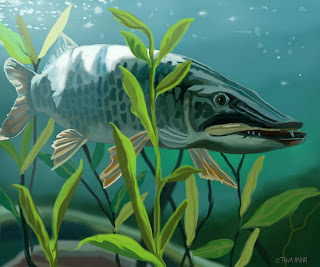If new to this site, scroll down to Chapter One
Chapter Five
The Mountain Men
of Kinniconick
“Good friends, these mountains are t’ me
the kindest ones I’ve known,
and when I’m in these mountains
I’m never quite alone.
“I like t’ hear the whisperin’
Of a gentle mornin’ breeze,
and listen t’ the birdsong
that’s pourin’ from the trees.
from “The Mountain Man” by Bette Wolf Duncan
Watercolor by Winslow Homer
The Shawnee said goodbye to Kinniconick. Vanceburg bid hello, to the white men who floated down the Ohio in search of farm land, especially the rich bottoms along the big river and some of its tributaries. The year was 1800. The Kinniconick valley was rugged country, not especially suited to agriculture, so another breed of adventurer discovered that mountain sanctuary and pursued its game, fish and furs.
Watercolor by Winslow Homer
By 1800, land grants had locked up thousands of acres in the valley, but there was nothing to prevent a man living on another’s land. The earliest abodes along the creek were the shacks of Mountain Men.
Watercolor by Ogden Pleissner
No doubt the rustic walls of their shacks were adorned with the skins of beaver, the antlers of deer and the heads of muskies. An Eddy on upper Kinniconick is called the Beaver Pond, and perhaps an old shack overlooked the Pond not far from where a hotel would be built one day. ( In a subsequent chapter, I’ll tell the story of the legendary Kinniconick Hotel.)
If a Mountain Man “squatted” on the Beaver Pond back then, he would have built a boat for use on the creek and it would have been a flat- bottomed scow. Thick planks of oak were shaped into a craft and the cracks were filled with oakum, but the mountaineer got his feet wet nonetheless because the scow always leaked.
Watercolor by Winslow Homer
The Beaver Pond may have been home to some mighty big muskies. The fish grew to enormous size in the Ohio River two hundred years ago, perhaps six feet in length and close to a hundred pounds in weight, and old timers who lived on the Kinniconick fifty years ago claim that four and five footers still existed in the eddies of Kinney. If the Mountain Man on the Beaver Pond boated a big muskie he did not take it on hook and line, however. He shot it with his Kentucky long rifle when it swam upstream, in the riffle at the head of the Eddy, during the Spring spawning run.
The Ohio subspecies of muskalonge is truly an exotic fish. It was transplanted from the North during the last advance of glaciers and was plentiful in the Ohio River and its tributaries until the nineteenth century. Native muskies soon disappeared in most of those waters because of overfishing, pollution and silting, but survived in a handful of mountain streams. Kinniconick became the last, most idyllic redoubt for this magnificent fish.
Artist Unknown
Note:
All of the artwork attached to this blog, in this chapter and all others, can be enlarged by clicking on the pictures.





I found this blog by accident. I grew up fishing the creek with my cousins and have fond memories of a lot of swimming holes and adventures camping out on its banks,especially Tetonia Island and Yellow Banks. I now work within a stones throw of it and can hear and see the water meanduring the eddies and running the riffles. Keep up the good work and love reading the articles! Posted a link to my facebook friends here in Lewis County!! Jeff
ReplyDeleteThanks for writing, Jeff. My cabin overlooked a riffle and the sound of those rapids put me to sleep a thousand times. Ken
ReplyDeleteThis comment has been removed by the author.
ReplyDelete